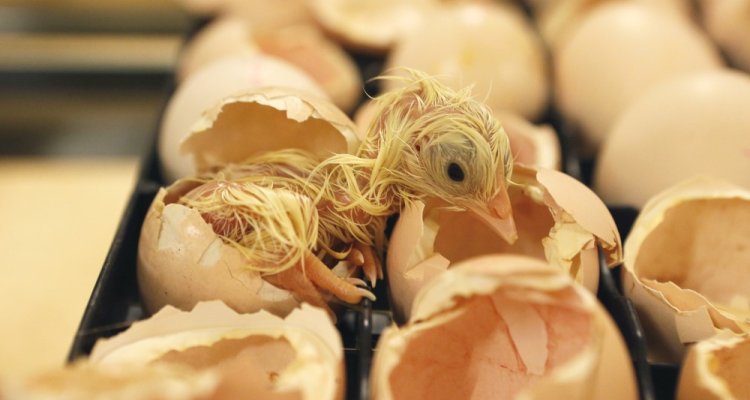
News
Better health in chicks hatched in barn
Broilers that hatch in the barn show fewer deaths and foot lesions. 'This hatching method may also have long-term benefits', says Ingrid de Jong, project leader on behalf of Wageningen Livestock Research, who compared traditional hatching systems with hatching in the barn fort his study.
Chick health appears to be contingent in the animals' early circumstances. Since a few years, there are alternative systems where the broilers hatch in the barn. Here, they have water and food at their immediate disposal and no longer need to be transported after hatching.
This research focuses on the influence of the events surrounding the hatching of the chicks on their physiological and behavioural development. Not just in this early stage, but up to the slaughtering age. The effects on technical results, such as growth and feed conversion, were included in the research.
Better health
Results that were measured during an experiment conducted at the testing facility poultry farm in Geel (B.) show that chicks that hatch in a barn develop better health. 'It seems plausible that the circumstances surrounding the animal's earliest stages in life have a lasting effect on its health and behaviour. However, little is known about the underlying mechanisms', De Jong says. Some effects disappear when the chicks age. For example, chicks that hatched in the barn were heavier than those from the hatcheries until the 21st day, after which this difference disappeared. This study, conducted under controlled circumstances, largely confirms previous findings from farms.
Behaviour
'This is the first study that also considers the long term effects', De Jong says. The different hatching systems did not show any differences in behaviour in the coop. However, both younger and older chicks reacted differently when exposed to testing situations. This effect will be investigated further in a follow-up study, to be conducted in collaboration with the department of Adaptation Physiology and the EU-project Healthy Livestock.
The aforementioned results are described in the following scientific publications: